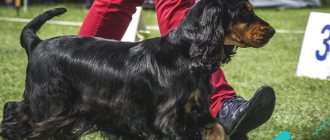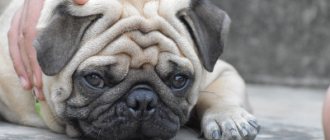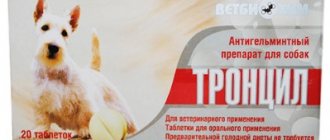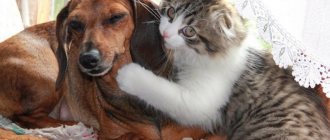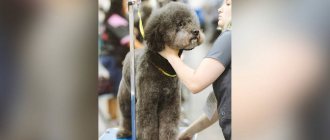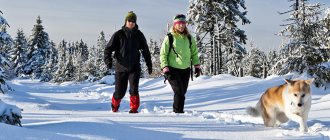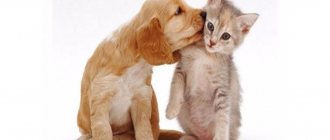There is hardly a person who does not know who a dog handler is. Most people probably know what a groomer does. But we are sure that not everyone knows who the handler is. But for owners of purebred dogs, a good handler will be very useful. Let's look at what kind of profession this is, where to study and approximately how much handlers earn.
pexels.com/
Features of the handler's profession
Handling is a section of cynology that talks about preparation for exhibitions and the art of demonstrating them. Experts believe that the level of handling affects 50% of the assessment. The ability to emphasize a dog’s advantages by focusing attention on them is a real art. It is available only to those people who have repeatedly entered the ring with different breeds and characters of dogs. Such experience also allows you to cope with the unpredictable antics of your charges in the ring, which happens quite often, especially among novice participants.
However, before the animal can be released into the ring, it must be prepared. He will have to learn to trot along a given figure, freeze in a stance, and demonstrate his teeth and bite. In order for the pet to pass all evaluation stages flawlessly, long, thorough and correct preparation, called ring training, is necessary. The animal’s exterior also requires attention – haircut, hairstyle, etc.
The handler must not only present the best sides of the ward, camouflaging the shortcomings, but also instill confidence in the pet to win. To do this, the dog must feel comfortable around the trainer. Uncertainty and fear in the gaze are not inherent in winners, no matter how beautiful and thoroughbred the animal may be.
Handling is a section of cynology that talks about preparation for exhibitions and the art of demonstrating them.
Can the owner prepare the dog? Of course, but most often this is a non-professional who approaches the process as an amateur, making all sorts of mistakes that ultimately cost victory. So, an amateur is unlikely to be able to position the dog in such a way that the chest appears wider and the paws appear stronger. This requires not only knowledge, but also experience with professional skills.
Owners who have an animal with good conformation and want to achieve high results are increasingly turning to handlers for help. Under competent guidance, an animal can make an excellent exhibition career.
Training begins with getting to know each other and establishing contact. Taking into account character traits, habits, identifying weaknesses, behavioral defects and fears allows you to develop an individual program and begin training.
The most important thing is that the pet begins to trust the handler. Only after mutual understanding has emerged will the animal be able to relax and feel at ease. This will be followed by working with the ward on the coherence of joint actions, which are necessary not only in the ring, but also for the animal to gain confidence in its own abilities. They are sensitive to the coach’s praise or dissatisfaction, so they try not to let them down and live up to their expectations.
Apart from the ring, the dog must behave with dignity throughout the entire exhibition. Not everyone comes to the event for medals. Some people attend exhibitions to take a closer look at the breed, and then choose a pet for themselves, or select a promising “groom”/”bride” for mating. The animal's trainer also takes care of the animal's behavior throughout the event. Some owners even allow handlers to take their dogs to shows on their own, assigning them the role of “guardians.”
Handler services
All that remains is to understand the most important thing - where to look for a handler for your dog and in what situations he may be needed. You should also pay attention to the advisability of self-training, because not all owners are ready to give their pet to a stranger.
When you need them
First of all, owners of several “star” pets should turn to the services of a dog handler. It is impossible to keep track of everyone on your own. This negatively affects performances, so in such situations it is simply necessary to enlist support.
It makes sense to seek help even if you do not have the time, desire and skills to conduct regular classes. It is not at all necessary to build a career for your pet on your own, because it is much easier and more effective to entrust this to a person with experience.
Thus, the service is relevant only for show and breed class pets. If your pet cannot participate in dog shows due to lack of pedigree or belonging to the pet class, then you will not need a handler.
How to choose the best handler
The title of the best dog handler will be confirmed by recommendations and certificates. You should not rely solely on reviews on websites, as a positive rating may turn out to be a “cheat.”
In addition to online resources (professional forums, social networks), try looking for a handler at dog shows or ask your breeder for help. In the first case, you will be able to watch his work and evaluate his ability to find a common language with animals.
Before concluding a long-term contract, be sure to arrange a personal meeting so that not only you, but also your pet gets to know the handler. Some owners also recommend checking the criminal record of the future trainer to rule out cruelty to the animal and disappearance after prepayment.
Can you handle it yourself?
No one forbids the owner to prepare and display on his own, but in the absence of basic knowledge, he will never go beyond the amateur level. 50% of the final grade depends on the experience of the trainer, so if you refuse a handler for your dog, you are taking a big risk.
Beginning competitors often engage in unwanted antics right in the ring. Judges may deduct points for fighting with other four-legged animals or for a less-than-successful display from the wrong side. It takes several years to deal with errors, so this option is only suitable for the most stubborn.
Handling is a very interesting, but rather complex discipline that requires knowledge of canine anatomy and psychology. If your plans include a successful exhibition career for your pet, then it is better to entrust all the preparation to a dog handler. This will speed up the moment of receiving the first award and eliminate a long series of failures due to lack of experience.
Do you like the article? 0
Handler skills
Often, coaches work with several students at the same time. Some prefer to train representatives of only decorative breeds, since they perfectly know their standards and nature’s character, being able to emphasize their advantages, while others are interested in working with different breeds and sizes.
An experienced expert will immediately assess the animal’s exhibition prospects. It should be borne in mind that even the most elite show-class puppy may be left without awards if there were more confident, prepared and better representatives at the exhibition. The main thing to remember is that the dog needs attention and participation not only during training and events, but also after. The handler and owners should encourage the animal, instilling confidence in their goodwill and love, regardless of the results of the competition.
In addition to training, the specialist must have knowledge in related areas, also related to the presentation of dogs. Some independently provide services such as nail trimming, hair trimming, teeth brushing, and styling, while others refer them to highly specialized professionals called groomers.
Activities
Handling is the act of showing dogs at shows. It originated many years ago and went through many stages of formation. Nowadays, this art is divided into 3 main directions.
Popular destinations:
- American. This handling option is considered the most accessible and popular. It involves long-term training of the dog in dozens of basic commands that will help hide the animal’s shortcomings and emphasize its advantages.
- English. This direction requires that the dog independently carry out all the necessary commands and take the correct stance. In this case, the handler's job is to teach by constantly maintaining the animal's interest.
- German. Handlers who choose this direction always work in pairs. One specialist takes the dog to the demonstration area and keeps it on a leash, and the second one shows the dog commands from outside the stage.
Handlers' dress code
Appearance is of particular importance. It’s not for nothing that people are greeted by their clothes. Moreover, this applies to both participants in the performance, since not only the dog, but also his trainer appears on stage. The judges evaluate each partner separately and how they look together. Therefore, it is so important that the handler’s clothing and behavior match his charge.
The first rule of the dress code is neatness and convenience. Clothing should be loose enough so as not to restrict movement, but not interfere with movement. We shouldn’t even talk about neatness and cleanliness - they are a priori markers of compliance with the profession and professionalism.
Another important point is the color of clothing. The robe should emphasize the color of the pet’s coat, that is, have a contrasting color. The handler's beige trousers and coat of the same color will merge and the judges will not be able to appreciate the magnificence of the dog. In turn, the same color of the animal against the background of black trousers will not only be clearly visible, but also emphasized.
The judges evaluate each partner separately and how they look together
The next thing you should pay attention to is shoes. Even if a woman is exhibiting her pet, she should avoid wearing heels. Shoes or sneakers should be as comfortable and convenient as possible, ensuring easy load bearing, because you have to run a lot in the ring. Also, shoes without heels will not injure the animal under any circumstances, for example, if the trainer accidentally steps on its paw.
Provocative and too loose clothing is inappropriate. In addition, it is not recommended to do high hair, wear massive jewelry, or wear bright makeup. The handler's appearance should not distract the attention of the panel of judges from the direct participant in the competition.
We evaluate objectively
Like any profession, the specialty of a handler has its advantages and disadvantages. The first ones are obvious:
- the opportunity to study at any age, in parallel with study/work;
- the ability to combine a hobby with your main job;
- the opportunity to turn a hobby into a job with income;
- self-realization in doing what you love;
- prolonged exposure to fresh air;
- travel and interesting acquaintances thanks to exhibitions;
- free schedule;
- good income;
- the opportunity to communicate with like-minded people.
For an objective picture, we will list the disadvantages, although they are few. The disadvantages are mainly related to the specifics of working with animals:
- regular and labor-intensive work with a pet;
- emotional and energy costs;
- there is no guarantee of success;
- it is necessary to be able to establish contact not only with the animal, but also with its owner;
To summarize, we note that there are similar disadvantages in every profession - like routine and failures. But for real “dog lovers” this is just a reason not to give up, to work even harder and believe in their charges.
How to become a handler?
Can anyone become a handler? Undoubtedly! But to do this, you will have to go through the thorny path of studying information about the breed and gaining experience working with its representatives. Time deepens knowledge and experience, and if you have it, you can achieve excellent results in your career. In turn, when it comes to showing your own dog and learning the basics with it, it is better to give the right to raise and prepare the puppy to a specialist, otherwise precious time will be lost and the animal will not be able to achieve recognition, although the results of fruitful work will be obvious, just like the one acquired by the owner experience. Successes will become brighter, performances will become more artistic, and the walls of the house will be covered with medals and framed diplomas.
Another path to the profession begins from childhood. So, if you have a show puppy at home, which is given into the hands of a good handler, and a child who wants to participate in the raising and exhibition of the pet, you can combine business with pleasure. To do this, it is enough to send a young talent, that is, a daughter or son, to the “Young Handler” circle. Similar sections are available at almost every kennel club or center. The teachers there are professionals with experience, which allows you to prepare an intelligent young specialist in a couple of years.
Another path to the profession begins in childhood
Recently, handling can be learned in a special school. There are more and more of them. True, so far only in large cities. When preparing children, institutions comply with international rules.
A child applying for handling training must be 9 years old when entering school. The training lasts one year. During preparation, the child studies the theory of dog breeding and applies the acquired knowledge in practice, training the skills of presenting the animal in the ring.
Personal qualities
Having certain character traits will help a handler succeed in his business. First of all, the specialist must love animals and show interest in communicating with them. Other important personal qualities include the following:
- determination;
- persistence;
- good reaction;
- tact;
- patience;
- resourcefulness;
- energy;
- the ability to adapt to the current situation.
Handling secrets
Successful presentation of an animal consists of a number of rules, maneuvers and secrets that are known only to professionals. What a future handler should know:
- It is recommended to hold the leash with one rather than two hands.
- Control through the leash should be firm, not rough. The approach is developed during training; it is too late and unacceptable to train a dog during a performance. A rude attitude towards a student reduces grades.
- When demonstrating a ward, the coach, if necessary, gets down on one (not two) knees and his back is straight. This makes it easier to handle the dog and more convenient to get up.
- In a highly competitive environment, the correct stance is important. If the animal has already accepted it, you should not demand anything else from him, as this may irritate/distract/confuse him.
- Early training in the ring can cause the animal to become tired. There's no need to rush. It’s better to start preparing a couple of participants before your exit.
- The work of other handlers requires attention, as it will allow you to adopt positive experience, skills and advantages.
The most important secret of success is love for animals. Knowledge of breed standards, expert preferences and other nuances is secondary if the handler does not know how to communicate with his charges or does it forcedly.
Handling styles
Despite the fact that handling originated in the USA, it quickly gained popularity in European countries. This led to the emergence of numerous styles of displaying the animal, but in the end they were reduced to 3 main ones:
- American
. It is based on mechanically placing the dog in the desired position with the help of hands and a leash. Most often used.
- German, or double
. Involves performing with two coaches at once. One is next to the animal, and the second is outside the ring. The latter’s task is to attract the dog’s attention with food and toys. Because of this, the show is accompanied by constant bustle and noise.
- English
. The goal is to achieve mutual understanding and interest in the demonstration on the part of the dog. The animal performs all stances independently, enjoying it. Correcting the posture with your hands is not allowed.
Regardless of the style chosen, the handler must teach the handler proper trotting, teeth showing, and other basic skills. When working with several breeds simultaneously, trainers choose 2-3 options at once, trying to find an individual approach to each of the four-legged animals.
IMPORTANT!
CI does not recognize the German handling style. If used in international competitions, participants will be disqualified.
Handling styles
The concept of “handling” appeared in America. Today it has become popular in all European countries. Initially, handling originated not in cynology, but in horse breeding, when handlers prepared and showed noble horses for an exhibition.
Interesting! The first dog show was held in England in 1860. Only Pointer and Setter breeds took part in it.
The widespread spread of dog shows dates back to the beginning of the 20th century. Since the 70s, events began to be broadcast by various television channels, and all kinds of dog shows gained popularity. All this has made the handler's profession very in demand and popular in professional circles. The purpose of the shows was not only the opportunity to win and take as many medals and diplomas as possible, but also the socialization of animals, getting to know potential candidates for mating and other representatives of the breed to learn from experience.
The first dog show was held in England in 1860
Handling styles were gradually formed and divided into types, depending on the individuality of the handlers, breed, venues for shows and much more. As a result, a large number of styles were formed, but three main ones stood out among them:
- American style. The most popular and affordable. Allows you to emphasize the advantages of the breed and hide shortcomings, if any. Therefore, in style, each paw of the animal is placed separately, slowly raising and lowering the dog, which, like a construction set, is assembled from parts. Such a demonstration is very impressive, but in order for the animal to behave correctly and accurately follow commands, long preliminary training must be carried out with it.
- The English style is considered free, as the breed is shown without the participation of a handler. The animal independently takes the ideal stance required by the rules. Only accurate execution of the exercise allows you to get a good assessment from experts, and this is possible only after painstaking training, as well as if the dog is interested.
- German style. Also called double. The animal represents and demonstrates to two people at once. This technique is used when showing shepherds, Great Danes, Rottweilers, Dobermans, etc. While one handler holds the dog on a tight leash, the second from behind the stage attracts his attention with toys and food.
What is handling for dogs?
Handling is an important branch of cynology that originated in the USA. In English it is written as handling and is translated as “to process”, but in meaning the term is close to the word management, that is, “control”.
NOTE!
The word handling is also used in other areas: IT, logistics and production. This explains the wide variability of translation and the importance of context.
In cynology, the word handling refers to the art of demonstrating four-legged pets at dog shows. The leaders of such shows are called handlers.
It can be assumed that handling for dogs is a fairly simple discipline that any person can handle. This opinion is wrong, because, in addition to the boundless love for four-legged pets and his work, a real handler must receive an education diploma.
Preparation stages
Preparations for the event should begin at least six months before the performance. In this case, the dog must be trained or have previously taken part in such events. Otherwise, it will take at least a year to prepare.
First, the animal should get used to the handler. Secondly, it is necessary to study the basics of training and the actions required for exhibition. Thirdly, bring all of the above to perfection. It is also important not to forget about the socialization of the pet, which, even if all commands are carried out perfectly, may simply become frightened by a noisy crowd and forget about everything in the world except its animal fear.
The handling process consists of physical exercises, examination of the teeth and demonstration of the bite. It follows from this that you should imagine not only a well-trained dog, but also a physically healthy one.
Preparation
When purchasing a puppy for exhibitions, it is recommended not to hesitate for a single day, but to begin training immediately. Only in this case can you count on prizes and medals. The main task of a puppy is socialization. The child should spend a lot of time among representatives of different breeds and ages, so that none of them causes horror or interest in the future, distracting from important goals and objectives.
In addition to getting to know four-legged animals, the puppy must learn to be in the company of large crowds of people. It is recommended to walk with the baby in parks, where he will get to know human cubs, and subsequently, without showing aggression towards them, as well as along the streets, where the baby will get used to the hum of cars and the noise of the city.
For socialization, it is important to get used to different environmental factors. In the future, this will help during exhibitions, where it is always very noisy, as a result of which many participants are distracted by the barking of fellow exhibitors, the chatter of a large number of strangers, the horns of cars, the bright lighting in the halls, losing such important points for the high assessment of experts.
When purchasing a puppy for exhibitions, it is recommended not to hesitate for a single day, but to begin training immediately
Important! A pet that is purchased for regular participation in exhibitions should be provided with appropriate care, proper balanced nutrition, trimming and grooming.
The next step in preparing a dog is choosing a handler. This must be a professional with recommendations and certificates. The latter should not be shy to ask.
The first thing the specialist will do is get to know the pet and try to establish contact. This will be followed by an introduction to the training room and outdoor training area. Often, one lesson between a handler and a dog lasts no more than an hour.
Based on the characteristics of a particular breed, the handler will select tactics for his behavior, thanks to which in the future he can easily and quickly build good and fruitful relationships with his ward. Regular training will allow you to achieve coherence in the following actions: the dog’s quick response to commands, strengthening endurance and much more.
Already in the second lesson, the trainer should begin teaching the animal the correct movement in the ring. During the show, the dog should run slowly, walk or trot. During training, you should use a special thin leash with a rope, which will be required in the ring. For training, you can purchase less easily soiled, expensive and simply good-quality accessories and attributes, but for an exhibition you will need more expensive and beautiful elements.
Important! Having handed over your dog to an experienced handler, you should not forget about home training. The simplest, but no less important exercise is showing the teeth and jaw. The dog should have a normal attitude towards these processes, without showing displeasure and, even more so, without biting those who get into its mouth. To do this, you will have to work hard, regularly performing the following actions: show the pet a treat with one hand, and run the other over the teeth, after which you immediately hand over the treat. Next, the dog’s lips are lifted and the treat is given again. Thus, the animal gets used to opening its mouth without fear and anger.
Exhibition stand
The most difficult stage in preparing an animal for exhibitions. This requires a lot of endurance and the desire of the pet. The dog is brought to the stand gradually, devoting time to it during each lesson.
First, the correct position of the paw is taught. Next, hold the latter motionless on the weight. Afterwards, place the paw in the required place. The first attempts at the correct stance begin with the handler “dancing” with the dog. First, the trainer stops, then dances with the animal, holding a bag of treats at the level of its mouth, but without giving any goodies. The dog has to rearrange its paws until they are in the correct position, and only at this moment does it receive the desired treat. Regular repetition allows you to remember in which position the reward occurs by giving out a treat, and you can easily repeat the position expected by the trainer.
Dog on a simulator for practicing the exhibition stance
Over time, the trainer will stop dancing with the ward, there will be no need for this, which will allow him to move on to the next stage - standing in a standing position for 10 seconds. At the same time, the competitor must stand still, allowing him to evaluate not only his external data, but also willpower, as well as training.
Showing movements
The movements are shown in every workout. The complex includes all the elements necessary in the ring. This is not only standing and trotting, but also exiting/leaving the stage, as well as showing teeth.
Most dogs do not like strangers approaching them, especially if they touch and examine them. To accustom the animal to such procedures, handlers regularly invite strangers to training sessions, and also conduct classes with several pets at the same time, thus creating noise and fuss.
When preparing a future competition competitor, all the nuances should be taken into account. For example, according to the rules, the dog appears in the ring on the left hand of the handler. However, the judge may ask the dog to be removed from the right. Without preliminary preparation, he will get confused and look uncertain, which will reduce his chances of winning. Therefore, it is better to predict such moments and prepare for all possible options by carefully practicing movements during training.
In addition, the dog should learn to perform even inconvenient elements - which include the desired tilt of the head, rearrangement of paws, holding the tail and much more. For every correctly performed exercise, the animal must receive praise from the handler or owner.
How the training goes
The first thing to remember is that training takes place in any weather and time of year. In some places, special rooms or outdoor areas are chosen.
For successful performances in the future, preparation must begin at an early age. Very young puppies can already engage in socializing with other animals. To do this, you need to constantly walk and get acquainted with different breeds of dogs. It is equally important to get used to other surrounding factors - people talking, the hum of cars.
Important! If the goal is to participate and win in exhibitions, then it is better to organize proper nutrition, care, grooming and trimming for your pet as early as possible. This will help improve your health and improve your appearance.
When the animal grows up, a professional trainer is hired. One lesson lasts about an hour. It all starts with an introduction and demonstration of the place to practice. During training, the dog is taught coherence, endurance, correct movements and gait.
Common Mistakes
Mistakes in the ring with professionals happen very rarely and judges do not forgive them, which cannot be said about beginners. However, it is the handlers who practically never make mistakes, since they know all the canons and rules. However, it is worth familiarizing yourself with the list of the most common mistakes at exhibitions in advance in order to avoid them:
- Late on stage. It doesn’t matter whose fault it was – the dog’s or its trainer’s – it can negatively affect the competitor’s grades.
- Handler's absent-mindedness. We are talking about a dangling leash and blocking the dog from the judges.
- Failure to comply with referee's instructions. Often the latter may change the sequence of actions or ask to speed up/slow down movements. Such instructions cannot be ignored; on the contrary, they should be responded to as quickly as possible.
- Inappropriate feeding of a treat to a competitor. It is unacceptable before examining the mouth and teeth!
- Overemphasizing the positive aspects of the animal. Attracting the attention of experts to the ward through various tricks, for example, by stroking, ruffling fur and other signs of attention. All this is inappropriate and can be regarded by the judges as the coach’s lack of confidence in the experience and competence of the refereeing staff. Experts must evaluate the animal without outside help, so you should not artificially stir up their interest - this causes irritation and can lead to disqualification.
- Incorrect questions. Under no circumstances should you ask experts why the dog did not win. Firstly, a good handler himself knows where he or his ward made mistakes. Secondly, such questions can be considered insolent, which will ultimately affect not only the handler’s career, but will also put an end to the future of the dog, which generally kept quiet.
- Trying to get in good graces with experts. This is done using a technique called boasting. The handler lists his previous achievements or pet. This is what non-professionals do, which does not characterize them from the best side.
- Poor attitude and treatment of the pet. Jerking, shouting, tugging at the collar and leash are unacceptable among specialists and normal people!
- Dirty dog! An unkempt, ill or dirty exhibitor may result in disqualification.
A good trainer treats his ward and colleagues in the ring no less well, showing friendliness, not interfering with showing other dogs, and helping exhibitors when necessary.
Preparation of a young handler: from the first steps in the ring to crafting
Moiseeva Svetlana Alekseevna
Head of the "Young Dog Breeders Club"
Krasnokamsk.
Owner of the nursery "Daria's Joy"
handler with many years of experience.
The Young Handler competition is one of the most spectacular and popular competitions of any exhibition.
Handling is the ability to show a dog in the ring, hide flaws and show all the advantages of the dog being exhibited.
To become a professional Handler you need to understand the anatomy and psychology of a dog very well, know the standards of dog breeds and work very hard on yourself.
In classes at the School of Young Handlers, we try to instill in children the best qualities - kindness, a sense of compassion and caring attitude towards all living things. During the training, children receive broad theoretical and practical knowledge in the field of dog training, cynology, biology, and zoology. We try to maintain friendly relations between younger and older children in the team, teach the child the ability to help at the right moment and know that an older friend will always help and tell you how to cope with this or that task, we try to teach the child the ability to communicate with dogs of different breeds and sizes . And, perhaps, this will allow some of our students to decide on their choice of profession in the future - veterinarian, livestock specialist, dog handler, canis therapy specialist, etc.
Where should you start when preparing your child for a competition?
Our School of Young Handlers trains children of all ages, starting from 6 years old. The main priority is the child’s desire to work with the dog! A child can work either with his own pet or with another owner’s dog. In any case, our main task is to find mutual understanding and establish contact between the Young Handler and the dog. Therefore, if the dog lives at home with the Young Handler, his responsibilities include feeding the dog and walking it - this is mandatory, since I believe that only in this way the animal begins to trust the handler more, and they find a common language.
We do not divide children into groups during classes; everyone studies together. A group of 10 people maximum, since this not only unites the team, but also gives the children the opportunity to watch how other more prepared children work.
So, the child is ready, and he has a desire to participate in the YH competition, a dog is selected, and he comes to the hall in a great mood. The first thing he must learn is concentration in the gym, the ability to keep a distance and hold the ring correctly. The ring should not cut your hand, it should be convenient for quick folding and releasing when the dog starts to move. We teach children how to work with ringing separately; special time is allocated for practicing this skill. A child without a dog with a ring stands in the ring and collects and releases the ring. You need to be able to do this quickly. Treats for dogs also play an important role in the work; they should be comfortable for the handler, not stick to the palms, not large in size and very tasty for the dog, since at first this is the most important thing in working with a dog. It is necessary to teach the Young Handler to give the treat correctly, i.e. directly into the dog's mouth, and not while jumping or moving.
The Young Handler competition is divided into several age groups:
—Child and Dog - children from 6 to 9 years old,
- junior group - children from 9 to 13 years old,
- senior group - teenagers from 14 to 18 years old.
When demonstrating a dog in a group, the Young Handler must:
— lead your dog at a proper distance from others to avoid collisions;
- be at a sufficient distance from the dog so as not to disturb the judge;
— keep the line with competitors in line;
— when leading in a circle, keep a distance and do not allow the dog to catch up with the one in front (experienced participants try to hold the dog, i.e., as if to release the Handler in front if he is out of the judge’s field of view, gaining a little more space, and only then continue to lead the dog at the appropriate pace when he comes back into the judge's field of view, but at the same time you need to make sure that the gap is not so large and does not catch the judge's eye, showing that JH is behind).
Individual examination - presentation of the Young Handler
- Decide in advance where the dog will be located - on the floor or on the table; for this you need to find out which of these types of display of a given dog breed is most accepted.
— We place the dog in front of the judge at a distance of 1-1.5 meters, with its head counterclockwise, the dog must be placed strictly in front of the judge.
- Demonstrate your knowledge of the procedure for examining the dog’s articles, constantly monitoring it and without interfering with the judge in conducting the examination. Upon request, the dog's teeth must be demonstrated so that the judge can determine the location and number of teeth (it is especially difficult if the Handler shields the dog from the judge with his head).
— Change the running direction with your dog (make a turn). When performing all figures, special attention must be paid to the fact that the Junior Handler should never be between the judge and the dog. He must always take into account the position of the judge and decide which side of his dog he should be on. When assessing the movement of a dog in a straight line from the front and behind, you need to pay attention to the fact that the dog moves strictly in a straight line from the judge and back to him, so that the judge does not change his starting position.
It is worth mentioning that the dog is usually in the starting position, on the left side of the Handler. If, due to some circumstances, the judge wants the figure to be done in the reverse order, then in this case the Young Handler leads his dog (at least at first) from the right side.
- After completing each figure, you need to place your dog far enough from the judge so that he can once again check the general appearance of the dog without being forced to retreat or bend over.
To be able to show the best side of his dog, the Young Handler must be familiar with the anatomy and the dog breed standard. He should try to demonstrate his dog both in a standing position and in movement so that the dog's shortcomings are as little noticeable as possible. Of course, he must have knowledge of the internationally accepted handling typical for the breed being demonstrated and the most advantageous running pace for his dog. A Good Young Handler is fully focused on his dog, but is also aware of what is going on around him. He constantly controls his dog without overwhelming him. Ideally, the Young Handler, using words of approval, praise, and dog treats, encourages the animal and helps it behave freely and cheerfully. Such a good relationship, visible to everyone, harmony between the junior and the dog is one of the most important criteria when assessing the work of a handler.
The Young Handler should under no circumstances push his own merits to the fore; he must not show himself, but his dog in the best possible way. Under no circumstances should the owner and dog be on their own.
What matters is how the child and his dog look together in the ring. The free end of the ring, hanging next to the dog or lying on the floor, is very disturbing. Depending on the situation, the ring should be either rolled up in the Handler’s hand, or hanging on his neck (it is unnecessary to mention that the ring should have a suitable color and be selected in accordance with the color of the dog and not be conspicuous).
The dog must be well prepared for the show in accordance with the breed requirements.
There are a number of moves that the judge in the ring may ask you to perform.
These are movements in a straight line, a triangle and a circle, the letters “T”, “G”, “L” and “eight”. We will now look into displaying these elements.
The pictures show where the Young Handler should be when demonstrating the dog. The ability to guide a dog correctly is honed and polished only by repeated training in the gym or on the street; this is the labor-intensive and hard work of a Young Handler. When showing a dog in the ring, the Young Handler needs coordination of movements, the ability to control the dog using the ring, and at the same time everything must be harmonious and natural.
The Young Handler's clothing should match the color of the dog and create as beautiful a contrast with it as possible. It should be in perfect order, clean, comfortable, and should not be conspicuous, distracting attention from the dog. Clothes that are too careless look just as inappropriate as provocative clothes that are inappropriate for the moment. The costume or outfit should be elegant and, most importantly, appropriate for the child’s age, shoes with durable, non-slip soles, which (in the dog’s interests) should not knock or squeak in any way. For convenience, it is advisable that the Young Handler's costume have a pocket for treats; it should be located on the left side and in no case dangle from the Young Handler's costume.
Every entry into the Young Handler competition at any show of any rank is a HOLIDAY for the Young Handler!!!!! The child should be ready, first of all, to show and work with the dog, and not think about what prize he will get.
Our Junior Handler school in the city of Krasnokamsk, Perm Territory, can be proud of many students. These are: Daria Moiseeva - Winner of the Young Handler competition of the Eurasia exhibition in 2010 and 2011, junior group, Best Young Handler of the Russia exhibition, senior group in 2012 and Eurasia 2015 Best Young Handler of the exhibition.
Bakhareva Anastasia - winner of the exhibition "Russia" 2013, junior group, winner of Eurasia 2014, Russia - 2014 second place.
Of great importance in the victories of our girls is the fact that they participate in all competitions in the Perm Region, and they also participated in the Young Handler competitions in Moscow, St. Petersburg, Omsk, Ufa, Tolyatti, Yekaterinburg, Chelyabinsk, Perm, Tyumen, Kirov, Izhevsk. Our students also participate in youth arts competitions in other countries. In Belarus, Dasha and Nastya became the best Handlers of the junior and senior groups; in 2013, at an exhibition in Finland in Helsinki, Dasha won an honorable third place in the very prestigious Young Handlers competition, since the Best Young Handlers of the Scandinavian Countries took part in it. Daria became the Best Young Handler at the Balkan Tour 2011 and 2012, as well as in Macedonia and Montenegro, in Moldova. Since 2011, we have not missed a single World and European Championship, where our girls also showed their excellent work and more than once reached the top ten Best Handlers. All trips and participation in competitions are, first of all, character building and vast experience in the ring.
Our Dasha’s biggest dream was to participate in the most prestigious and numerous dog show, CRUFT*S. This opportunity was provided to us by the RKF in 2013 after winning the Russia 2012 exhibition. Dasha was nominated to represent Russia at CRUFT*S -2013. The very atmosphere of this grandiose exhibition and its scale impressed us very much. The attitude towards children is special there. The reception itself, the whole atmosphere of friendship and responsiveness, amazed us from the first minutes. We were met by James Skinner, the person in charge of CRUFT*S, he explained everything clearly and simply where and at what time we would be met. Each Young Handler has his own place and a dog assigned to him, because before the trip we filled out a special questionnaire, where Dasha talked a little about herself and her hobbies, as well as what kind of dog she would like to work with in the competition. After all, the peculiarity of this competition is that the dog is given out for work by the English Kennel Club an hour before the start of the performance. The child must know English (!) and find a common language with the dog - this is a very difficult task, but we managed it. At such an exhibition, the greatest achievement for a Young Handler is to enter the Top Ten Handlers. THIS IS VERY PRESTIGIOUS AND HONORABLE! We, parents and the main spectators of the competition, were very pleased with how the children cheer for each other, how they are friends and communicate with each other, how they encourage each other, support and even help out with a kind word and a treat for the dog. From her first trip to CRUFT*S, Dasha gained not only new friends, but also the experience of working with a dog that you see for the first time in such an atmosphere - a large hall, a huge number of spectators. And our work was crowned with success in 2015, our Daria Moiseeva wins the CRUFT*S 2015 International JUNIOR Handling Competition. Judge Elina Haapaniemi (Finland) gave the Victory Cup to Dasha. To say that we were surprised is to say nothing. We were HAPPY that Daria won such a PRESTIGIOUS competition! Daria couldn't win the competition in Russia, so we went to Belarus, where Dasha won the Young Handler competition and we were nominated for Birmingham. For such a great honor, we are very grateful to the Belarusian Cynological Association represented by Olga Mikhailovna Kislyakova !
The victories and failures of our Young Handlers are joyful and sad, but one thing I can say from my experience of training Young Handlers is a great experience for a child taking his first steps in the canine world.
Basic figures in handling
There are basic figures in handling; this can be called the basis of the display. Figures are performed at the request or command of the judge. The purpose of the figures is the most open examination of the data and abilities of the dogs.
The main figures include:
- Circle – dog and handler move counterclockwise. The dog walks nearby, near the left leg. In rare cases, judges ask to move clockwise, in which case the dog must be on the right. While the circle is moving, the referee stands in the center. If the judge starts to move and leaves the circle, the handler must stop on the other side of the dog. It is important that the handler is not between the judge and the dog.
- “From” and “To” – dogs with a handler move in the desired direction from or towards the judge. Movements must be clear and the trajectory strictly straight.
- Triangle – dogs and handlers move in an equilateral triangle.
- Figure “T” is the starting position in front of the judge, the dog must be in breed stance. The handler and the dog move away from the judge, with their backs, the dog goes to the left. The pair makes a left turn, walks a given distance and turns around. After the turn, the dog must remain in the expert’s field of vision, that is, move to the right side of the handler. Again, moving forward, turning around, returning to the initial trajectory, moving towards the expert and placing the dog in a stance.
- Figure “L ” – breed stance, movement towards the judge, then the same figure as “T” with a turn to the left and one turn.
- Figure “G” is a similar figure in reverse order, the movement starts from the judge.
- Figure “8” – the helper and the dog move along a given trajectory. The handler’s task is to constantly monitor the judge’s position and change the dog’s position so as not to block the view of it.
Dog handling at home
Handling means “control” in the English language. A handler is a specialist who controls a dog, be it in the show ring, or in protection classes or training. Most often, the term “handler” is used in the exhibition field and at show demonstrations.
Handler . The main goal of the handler is to demonstrate the pet to experts, concentrate their interest on the positive characteristics of the dog and the advantages of its physique, and, if necessary, disguise the dog’s imperfections. In order for the demonstration to take place at the highest level, the dog must first undergo training with a handler who will teach it to move gracefully and impeccably, have a decent stance for the breed, and calmly respond to a manual examination and demonstration of teeth. If necessary, the handler will carry out corrective activities regarding the dog's manners.
Canine training provides:
- services for preparing dog breeders for demonstrating their personal pet;
- preparation and adaptation of puppies from three months of age to exhibitions;
- services for selecting a handling specialist that is suitable for you and organizing your pet for the exhibition (a specialist can come to your home if necessary);
- services for organizing a personal exhibition schedule subjectively for the ward pet;
- traveling with your pet abroad in order to win international titles;
- high-class grooming services;
- on-site training services;
- services for preparing and conducting professional photography of your dog; on-site organization is possible.
The center's classes are held in professionally equipped halls on weekdays, and on rest days - at pet shows. The handlers working at the center are professionals in training the following dog breeds:
- first category (Hungarian, White Swiss Shepherd, Belgian Malinois and Tervuren Shepherds, Collie, Welsh Corgi Cardigan and Pembroke);
- second category (Dogue de Bordeaux, German, Argentinean and Canary Rottweilers, Brazilian Fila, Bernese and Entlebucher Sennenhunds, Dobermann, Zwerg-, Mittel- and Giant Schnauzer, Shar Pei, Ca De Bou, Miniature Pinscher, Bullmastiff, Newfoundland, Cane Corso, Central Asian Shepherd Dog, Russian Black Terrier, Doberman);
- third category (Miniature, Standard, Stafforshire Bull Terriers, American Stafforshire and Parson Russell Terriers);
- fourth category (miniature and standard dachshunds);
- fifth category (Regular and American Akita, Basenji, Siberian Husky, Alaskan Malamute, Samoyed and Pharaoh Dog, Miniature German Spitz, Shiba);
- sixth category (Beagle, Rhodesian Ridgeback, Dalmatian);
- seventh category (English and American Cocker Spaniel, Springer and Clumber Spaniel, Golden and Labrador Retriever);
- eighth category (Small Brabançon, French Bulldog, Large and Medium Poodle, Chinese Crested Dog, Pug, Chihuahua, Yorkshire Terrier, Belgian and Brussels Griffons);
- ninth category (Whipet, Greyhound, Borzoi Russian and Persian);
- Tribes not approved by the FCI (Biewer, Boerboel, American Bulldog, East European Shepherd).
The advantages of ordering handling services for dogs, with a visit from a specialist to your home and provided by Cynological, are as follows:
- Handling specialists have been working in this field for more than 12 years! Savings club cards are opened for regular guests of the center. Benefit up to 30%!
- A specialist will visit you at a convenient time of your choice, seven days a week, from 10 am to 9 pm!
- We provide services in Moscow and the region.
- Both you and your pet will appreciate the high quality of service.
